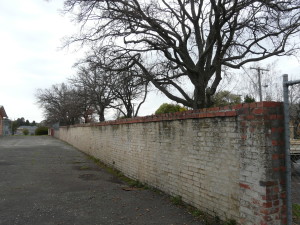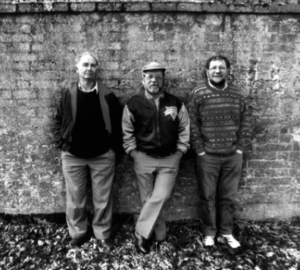UPDATE: Reaching back into a strange past
There was a gratifying amount of interest in my presentation at Parramatta on 20 October as part of a panel on Righting the Record: Towards a National Summit.
The Archivists Society of Australia has placed a live video of the presentation on U-Tube at:
Furthermore, it will appear in the next issue of Archives and Manuscripts, the journal of the Australian Society of Archivists (published by Taylor & Francis).
########
Reaching back into a strange past
This is a lightly edited version of a presentation I gave as a panel member at the Archivists Society of Australia (ASA) in Parramatta NSW, on 20 October 2016.
Other members of the Panel, which was chaired by Joanne Evans of Monash University, were:
- Bonney Djuric – artist, author, activist and founder of Parragirls and the Parramatta Female Factory Precinct Memory Project, which supports Parragirls to document their stories and preserve the Girls Home and adjacent Female Factory as Australia’s first Site of Conscience.
- Barbara Reed – a consultant in the field of records, archives and information management. She has been involved in a number of project, including the recently published Best Practice Access Principles and Guidelines for Care Leavers Records. Barbara has also been a consultant on records for the Royal Commission into Institutional Responses to Child Sexual Abuse.
- Sue McKemmish – Associate Dean of Graduate Research and Director of the Centre for Organisational and Social Informatics at Monash University. Since 1990, Sue has developed and taught Australia’s leading professionally accredited graduate program in archives and recordkeeping. Her research focusses on archives and human rights, and the participatory or inclusive archive.
In the hour before our panel, Justice Jennifer Coate, of the Royal Commission into Institutional Responses to Child Sexual Abuse, gave a most interesting address on the Royal Commission’s perspectives on records and archives. I will post a link to her speech when it is posted on the Commission’s website.
########
The Royal Commission provides a fresh and insightful assessment of the state of play in historic recordkeeping practices. The Commission frames the discussion through the twin concepts of
- records as core business and
- records as in the best interests of the child.
These are both critically important. The real challenge is making those concepts work in reality.
However, the Royal Commission’s Terms of Reference have created problems. As Justice Coate explained, the vast array of institutions it encompasses vary enormously in scope, what they do for children, and the way they operate. It is difficult to offer advice about records that is pertinent to all.[1]
The records that should be kept about 24/7 ‘locked-in’ children must necessarily be very different from those kept about a child who voluntarily attends a sporting club or a community organisation on a sessional basis.
By contrast to that broad remit, the Commission is limited to a narrow focus on matters relating to sexual abuse. We at CLAN say that accurate records must be kept about all critical events affecting the nurturing and protection of the child in care, not just sexual abuse.
We envy the records of childhood that others take for granted—birth certificates, photographs, artworks, school reports and medical histories, and other childhood mementos.
Reaching back to a strange past
We survivors of 24/7 ‘locked-in’ institutions reach back into a strange past where birthdays, anniversaries, christenings and other family occasions were never celebrated. We reach back to a past where there were no family stories handed down by parents and other relatives. A past which disconnected us from family and community.
In reaching back to this past, we apply for our ‘file’ expecting to find detailed, accurate records about our time in ‘care’ and the answers to questions about our childhood, e.g.
- Who put me into ‘care’? Why? Many think we must have done something wrong.
- Where were my parents? Many of us were told, sometimes maliciously, that our parents did not love us, were dead, or were bad people.
- What became of my brothers and sisters? Many of us were split up.
- What medical treatments and vaccinations did I receive? I feel a goose when the doctor asks and I can’t tell her.
- Did I have school reports and certificates?
- Why was I transferred to other placements?
- Who were the staff who looked after me? Did they record the fights I had?
In short, the archived records represent a repository of hope where we will find answers to questions that have nagged away at us, all the years of our adulthood.
Hopes dashed
Many Care Leavers are profoundly disappointed, even shocked and sometimes re-traumatised because, if their records haven’t been lost or destroyed:
- Many have large gaps in information, meaning it is not possible to create a coherent story
- Many contain inaccurate or misleading statements
- Official records are almost entirely negative. Far from finding milestones and achievements as we grew older, we discover the content is almost always about us as problems and we find insulting and demeaning, or downright hostile comments about us or our parents[2]
Parents and children were rarely encouraged to keep in contact. Letters were rare; and even when they were written, sometimes they were not given to the child to whom they were addressed. Nobody thought it important to keep alive the prospect of reunion or reconnection with our family in the future. The records were never envisaged as an important resource to that end.
Records are one-dimensional
We Care Leavers were never given the opportunity to contribute to our personal record—so what passes as an account of our childhood is one-dimensional. It’s clear that the writers of those records never imagined that the subject of their writings might one day read what was written about them and their families. The makers of records could write opinions masquerading as facts without being made accountable for their value judgements. In effect, they compiled secret dossiers—and were never called to account.
Rights to records
The Royal Commission’s Consultation Paper on Records and Recordmaking does not give sufficient weight to fundamental issues relating to rights about personal records.
The United Nation’s Convention of the Rights of the Child (1989) declares
- the right of the child to an identity,
- the right to maintain contact with parents,
- the right to have a say in decisions that affect them.[3]
The Convention should influence how records are made and gaining access to them.
Some of you may know the National Standards for out-of-home care, which were agreed across the national child protection community in 2011. Standard 10 states:
Children and young people in care are supported to…have their life history recorded as they grow up…to help them recall the people and events that have shaped their lives.
CLAN has written its own Charter of Rights to Childhood Records.[4] High on the agenda is the retrospective application to Care Leavers of the right of the child to contribute to the making of the record and the right of the child to share ownership of the record once it is made.
We agree with David Denborough who says:
Everyone has the right to define their experiences and problems in their own words and terms.[5]
Counter-narratives: hearing the silenced voices
It is not too late to learn the importance of involving children in contributing to their own story. Children in Out-of-Home Care (OOHC) today can and should have the right to make a contribution to their record as it develops. This can be done in a range of creative ways other than by written documents.
Is there a way of doing this retrospectively for Care Leavers? In the vast majority of cases, the official records do not supply a coherent narrative that meets the need to know the truth about the past, and to tell the truth to others such as our children.
Therefore, CLAN is encouraging a process of creating a counter-narrative that is richer and more psychologically satisfying for Care Leavers, and to offer a more balanced history to other Australians.
In part, this can be in the form of using existing rights to add our own version of events to official records where they are inaccurate or misleading—or incomplete.
Preferably, it means writing our own versions of our stories gleaned from sources outside official records, and publishing them in a variety of modes and spaces. This is happening more and more, and we urge more Care Leavers to get to work on their stories.
Interpreting the metaphors of our lives
Let me finish with an anecdote to make the point that paper documents sent to the archives are not the only truth. It concerns the former Ballarat Orphanage, my home for eleven years. This struggle will interest Bonney Djuric and others who fought to preserve the historic Parramatta site.
In 2011, former residents of the Orphanage began a long campaign to constrain the demolition plans of the new owner of the privatised heritage site. Facing the Victorian Heritage Council, and later the City Council and the Victorian Civil & Administrative Tribunal, the developer commissioned a history. This old brick wall circa 1880s was under scrutiny.
The hired historian ducked into the paper archives and reconstructed this description of the wall:
the pier-braced brick boundary wall…runs for approximately 100 metres, and most of this is in a weathered variant of Yorkshire bond with three stretchers separating each header. The wall was evidently punctuated by a gateway, as there is a clearly ‘filled-in’ part with much later brick and a dip in cornice height of about 30cm. This section is about 10m-wide in stretcher bond.[6]
I think of all those children whose lives were governed by that wall—and those who used it as their means of escape. I was one who regularly sat on that wall facing the spot where the tram terminated at the Orphanage corner, hoping and yearning to see one of our parents alight. The weeks turned into years before, one day, our father did step off a tram—and after he had gone, the Superintendent told me Dad would not be allowed to visit us any more if he upset me again.
My brothers and I were reunited at the wall 40 years later. In our minds—our personal archives—we would never think of it as ‘a weathered variant of Yorkshire bond’.
The past can’t remain the exclusive property of the powerful. Ultimately, we are all historians capable of making meanings of the metaphors of our experience.
##########
Footnotes
[1] Institution is an entity that ‘…provides, or has at any time provided, activities, facilities, programs or services of any kind that provide the means through which adults have contact with children, including through their families’ Royal Commission Terms of Reference at: https://www.childabuseroyalcommission.gov.au/about-us/terms-of-reference
[2] For ways in which records re-traumatise Care Leavers see: Jacqueline Z Wilson & Frank Golding, Latent scrutiny: personal archives as perpetual mementos of the official gaze, Archival Science, Vol. No. 1: pp 93-109.
[3] Articles 8, 9, 12 and 13 respectively.
[4] See www.clan.org.au
[5] David Denborough, ‘Narrative Justice Charter of Story-telling Rights’, a working paper, Dulwich Centre, Adelaide, n.d.
[6] Lovell Chen, 2013: A30.

